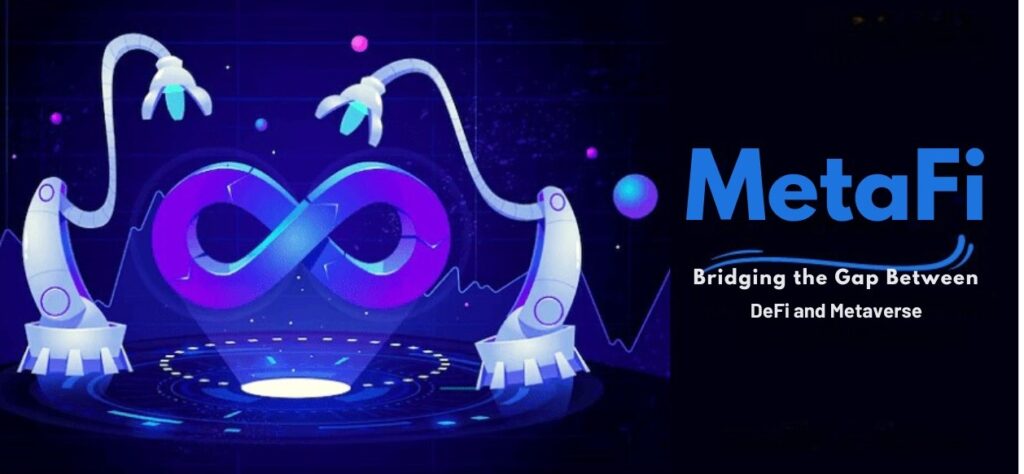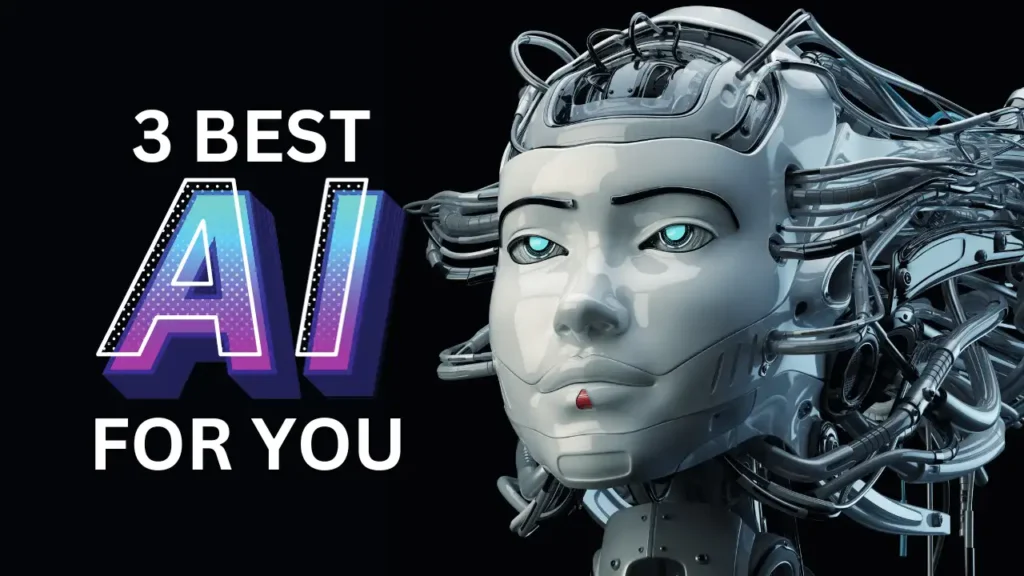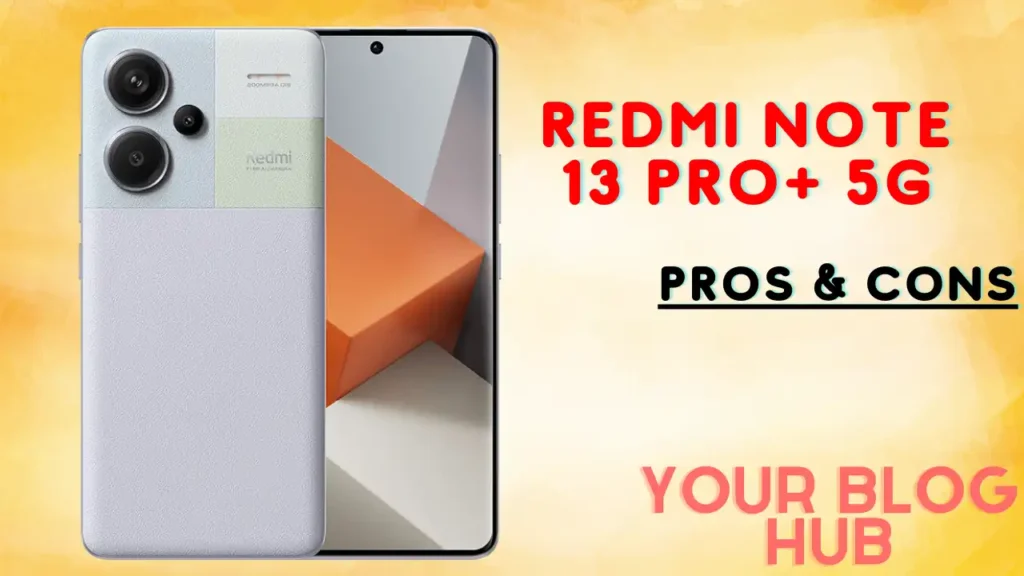The MetaFi industry grew at an exponential rate in 2020, going from less than $1 billion to $15 billion.
In a same vein, it is anticipated that the metaverse market would reach $783 billion by 2024 from $478 billion in 2020.
But the difficulty in achieving platform compatibility has restricted these two businesses’ potential. By combining DeFi and the metaverse into a brand-new, highly promising parallel economy, MetaFi seeks to solve this problem.
By standardising digital assets on blockchain technology, MetaFi makes cryptocurrencies, NFTs, and financial transactions more accessible by enabling them to be read and sorted in any virtual environment or marketplace. This post will provide you an overview of the basics of MetaFi, DeFi, and the metaverse in case you’re not familiar with them.

What is Defi?
Decentralised Finance is referred to as DeFi. It is a term used to describe a financial system that runs on a blockchain network and enables people to access financial services like borrowing, lending, trading, and investing without having to depend on conventional banks or financial organisations. Because the DeFi system is decentralized—that is, it is not governed by a single entity—transactions are carried out using blockchain-based smart contracts.
What is Metaverse ?
The Metaverse is a virtual environment where people may communicate with one other, take part in different activities, and use digital resources like virtual money. This idea is the coming together of the real and virtual worlds, where people may create and interact with digital content, have a virtual presence, and carry out a variety of activities in a virtual environment.
There are several applications for the Metaverse, such as in social networking, gaming, education, and virtual gatherings. Users can participate in activities that might not be feasible in the real world and have an immersive experience. Although the Metaverse is still in its infancy, it has the power to fundamentally alter how we communicate and engage with one another as well as the digital world.
How do DeFi and the metaverse come together through MetaFi?
The name “MetaFi” refers to the combination of two recently developed domains: the metaverse and decentralised finance (DeFi). The goal of MetaFi is to introduce the ideas of DeFi into the metaverse, so establishing a brand-new, highly promising parallel economy.
The compatibility of digital content across several platforms has been one of the metaverse’s main problems. By standardising digital assets using blockchain technology, MetaFi seeks to solve this problem by enabling them to be sorted and readable in any virtual environment or marketplace. By doing this, MetaFi will free people from the dependency on conventional financial institutions to participate in financial activities including trading, investing, and borrowing in a virtual setting.
By enabling players to acquire and spend digital assets inside the game’s ecosystem, MetaFi provides the potential to improve the immersiveness of gaming experiences in the gaming industry. This opens up new business prospects for both gamers and game producers in the gaming industry.
A fresh and creative approach to interacting with decentralised finance in the metaverse is provided by MetaFi. It has the power to completely transform how we communicate with virtual worlds and financial systems, ushering in a new era of digital innovation and communication. In the years to come, MetaFi may play a significant role in bringing about social and financial transformation as the globe grows increasingly digitalized.
Potential future of MetaFi and its benefits on the cryptocurrency and gaming industries
- Better interoperability:With blockchain technology, MetaFi hopes to standardise digital assets so they can be sorted and accessed in any online marketplace. By doing this, consumers may execute financial transactions virtually and independently of reputable financial institutions, improving platform compatibility.
- Extension of DeFi: MetaFi has the ability to significantly expand the applicability of DeFi outside of the traditional banking industry by integrating the metaverse. This might promote the usage of blockchain technology and cryptocurrencies and entice more individuals to join the DeFi ecosystem.
- Improved Accessibility:Through MetaFi, users would have easier access to financial services, enabling them to borrow, invest, and lend money within the metaverse. This may also open up opportunities for participation in the digital economy for those without access to traditional banking institutions.
- Enhanced security:MetaFi employs blockchain technology, which offers more security than conventional banking systems. Since transactions are kept on a decentralised ledger, fraud can’t easily alter them.
- New opportunities for game developers: By establishing a new economy inside the gaming industry, MetaFi gives game developers new ways to commercialise their works and make money.
- New revenue streams for individuals: Through MetaFi, users may profit from digital assets in a virtual environment, which may thereafter be used to buy products and services inside the metaverse, exchanged, or sold.
- Greater control:More ownership and control over digital assets are provided by MetaFi. Without the need for middlemen, users are in total ownership of their digital assets and are free to utilise them anyway they see right.
- Integration with real world finance: MetaFi’s interoperability with conventional financial systems may one day make it possible for assets to travel seamlessly between the metaverse and the actual world. This has the potential to establish a connection between the digital and physical economies and pave the way for the creation of new financial products and services.
With more accessibility, security, and control over users’ digital assets, MetaFi has the potential to usher in a new age of social and financial interactions inside the metaverse. MetaFi may have a big effect on the gaming and cryptocurrency sectors. As technology develops more, it
It will be interesting to observe how these sectors change and what new opportunities it brings to both individuals and corporations.
Challenges that come with the convergence of DeFi and the metaverse
Lorem ipsum dolor sit amet, consectetur adipiscing elit. Ut elit tellus, luctus nec ullamcorper mattis, pulvinar dapibus leo.
• Technological difficulties: Standardising digital assets using blockchain technology to ensure interoperability across different platforms can be a challenging task. It might be difficult to collaborate with several stakeholders and conduct a lot of development effort for this.
• Regulation uncertainty: Since DeFi and the metaverse are still in their infancy, there is a great deal of regulatory ambiguity. The regulatory landscapes of both industries are rapidly evolving, making it challenging to monitor and maintain compliance.
• Security risks: Hacking and other security issues are possible in the metaverse. The system’s potential attack surface may grow if DeFi is included, making system security more difficult.
• User adoption: MetaFi may have challenges in this area because many people are still getting used to the concepts of decentralised finance and the metaverse. It could take some time for users to become acquainted to these novel concepts and feel at ease utilising them.
• Flexibility. The introduction of the metaverse may exacerbate the scalability issues now facing the DeFi ecosystem. The system would struggle to handle a big volume of users and transactions without significant upgrading.
• Ethical considerations: The combination of DeFi with the metaverse raises moral concerns, as with any newly invented technology. For example, worries about how it may affect the environment and social and economic inequality may prevail.
Although there is a lot of promise for the convergence of DeFi and the metaverse through MetaFi, there are several difficulties. It will take a lot of development effort, collaboration amongst many stakeholders, and thorough assessment of the ethical ramifications of this new paradigm to address these issues.
Conclusion:
The possibilities with Web3 and blockchain technology are virtually limitless. The integration of DeFi, metadata, and the metaverse will facilitate decentralisation across nearly all domains. With MetaFi, transactions may be conducted globally without being limited by virtual criteria like time, place, or
amount of the transaction. Interoperability is the biggest of the many limitations and obstacles that exist at the moment.
It is also not yet possible to develop a technology that would allow perfect compatibility. The creators still have a long way to go before MetaFi becomes the true success that it may be. There are limitations in terms of hardware and software, regulation, and scalability. However, developers may be able to get around this with time and further technical improvement.
It is intriguing to watch how MetaFi evolves in the coming years since it offers an exciting new paradigm for the future of gaming and finance.
Are you trying to realise the full potential of DeFi and the metaverse? Addus Technologies – Metaverse Development Company is the only place to look. With the help of our state-of-the-art MetaFi development services, companies may use the newest trends and technology to create creative, safe solutions that promote commercial success.
Addus Technologies has the knowledge and experience to realise your ideas, whether they include developing a brand-new gaming platform, incorporating blockchain technology into your financial services, or completely changing the way businesses operate. Our industry-leading knowledge and cutting-edge development tools make us the partner you can trust to grow your business in the metaverse and beyond.



